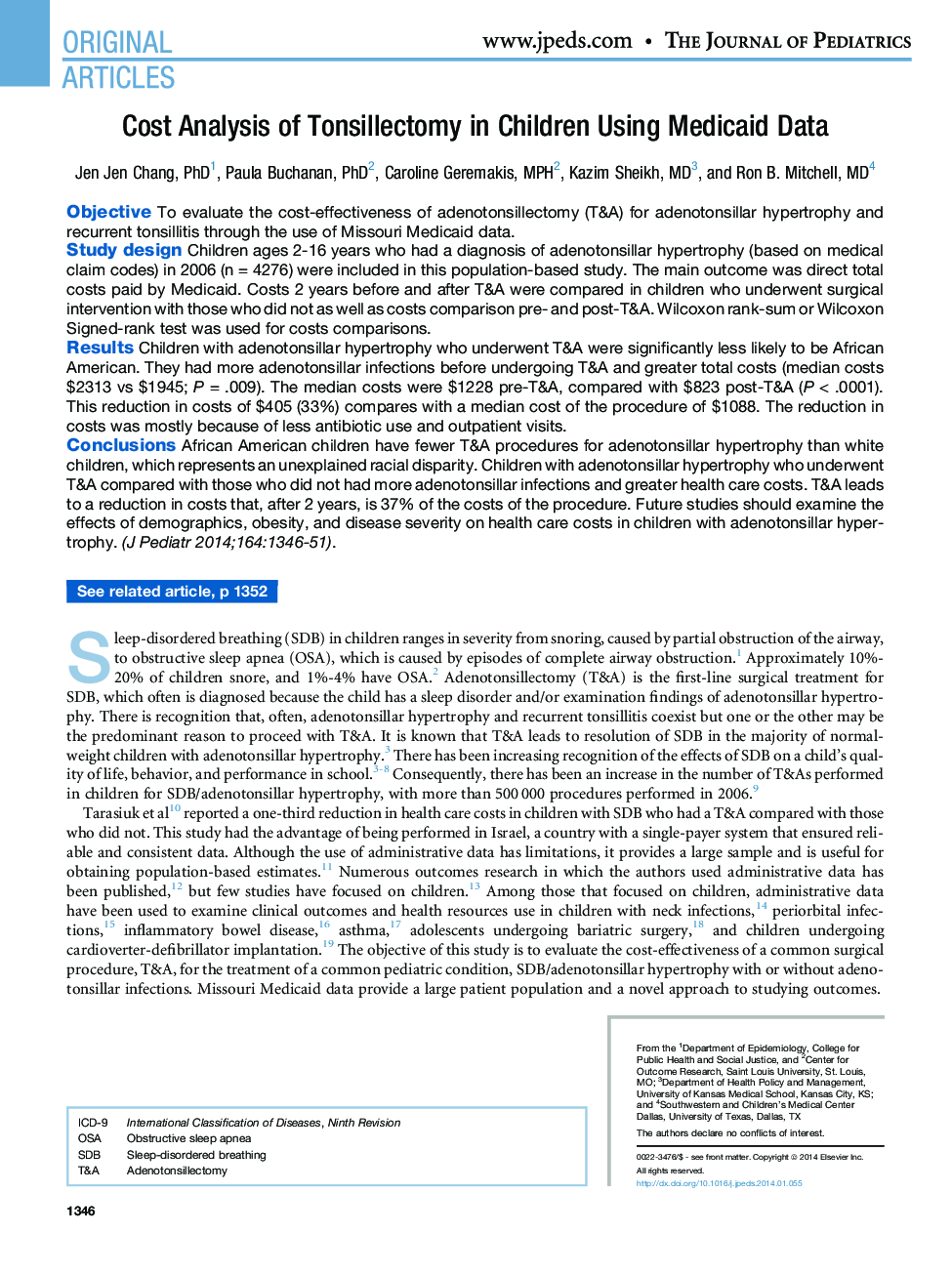| Article ID | Journal | Published Year | Pages | File Type |
|---|---|---|---|---|
| 6220645 | The Journal of Pediatrics | 2014 | 7 Pages |
ObjectiveTo evaluate the cost-effectiveness of adenotonsillectomy (T&A) for adenotonsillar hypertrophy and recurrent tonsillitis through the use of Missouri Medicaid data.Study designChildren ages 2-16 years who had a diagnosis of adenotonsillar hypertrophy (based on medical claim codes) in 2006 (n = 4276) were included in this population-based study. The main outcome was direct total costs paid by Medicaid. Costs 2 years before and after T&A were compared in children who underwent surgical intervention with those who did not as well as costs comparison pre- and post-T&A. Wilcoxon rank-sum or Wilcoxon Signed-rank test was used for costs comparisons.ResultsChildren with adenotonsillar hypertrophy who underwent T&A were significantly less likely to be African American. They had more adenotonsillar infections before undergoing T&A and greater total costs (median costs $2313 vs $1945; P = .009). The median costs were $1228 pre-T&A, compared with $823 post-T&A (P < .0001). This reduction in costs of $405 (33%) compares with a median cost of the procedure of $1088. The reduction in costs was mostly because of less antibiotic use and outpatient visits.ConclusionsAfrican American children have fewer T&A procedures for adenotonsillar hypertrophy than white children, which represents an unexplained racial disparity. Children with adenotonsillar hypertrophy who underwent T&A compared with those who did not had more adenotonsillar infections and greater health care costs. T&A leads to a reduction in costs that, after 2 years, is 37% of the costs of the procedure. Future studies should examine the effects of demographics, obesity, and disease severity on health care costs in children with adenotonsillar hypertrophy.
